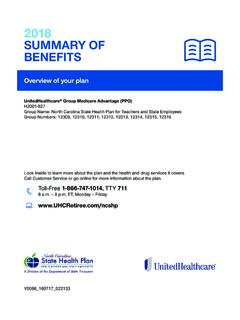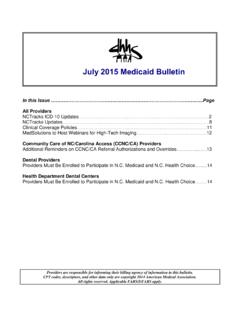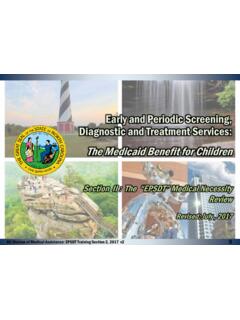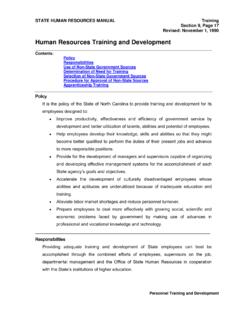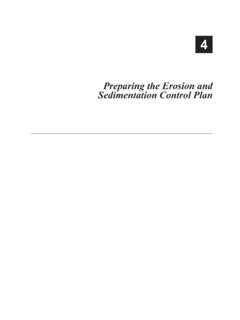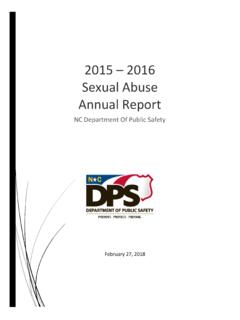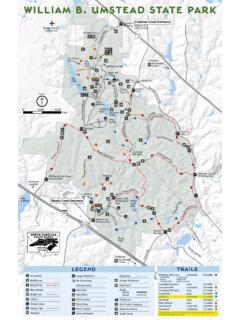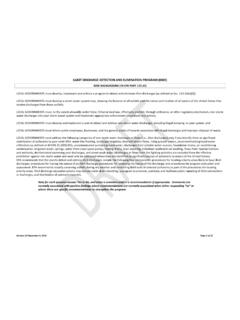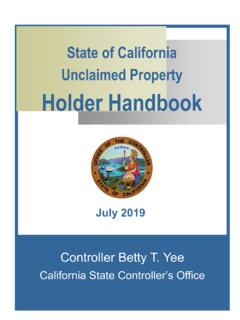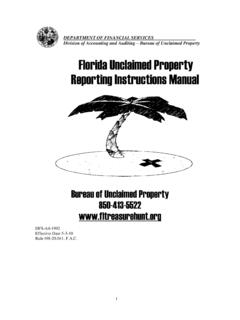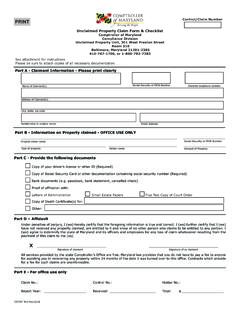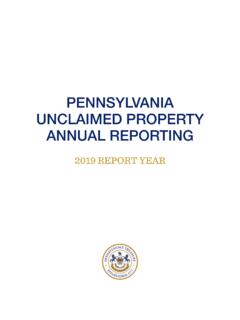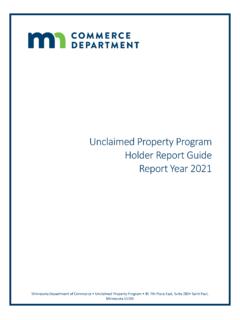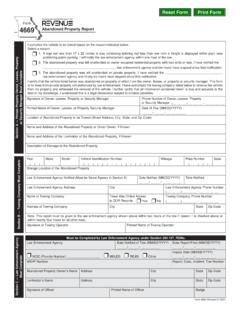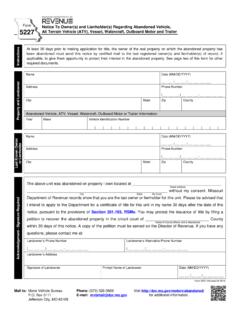Transcription of Unclaimed Property Procedures
1 Revised 3/2016 25-B-1 NORTH CAROLINA DEPARTMENT OF STATE TREASURER Unclaimed Property AUDIT Procedures The Department of State Treasurer (DST) oversees and maintains the state s Unclaimed Property . By law, Unclaimed Property is escheated, or turned over, to the department for safekeeping. The Unclaimed Property and Escheats Division (UPD) is responsible for recovering, safekeeping, and returning such Property to its rightful owner. Monies in the Escheat Fund are invested to maximize the greatest earnings for utilization by the North Carolina State Education Assistance Authority in order to provide grants and low interest loans to North Carolina students in state supported schools of higher education. The audit Procedures below are provided as an aid to the auditor in identifying potential Unclaimed Property during the course of an annual local government or public authority audit.
2 These Procedures are not intended to be all-inclusive; professional judgment should be used in determining the extent of tests. A copy of NC General Statute 116B, Holder Reporting Guide, Guides to Unclaimed Property , Conversion Tables, Reporting Forms, etc. is available at Because the Procedures below may be incorporated with other audit Procedures , please read this audit program entirely before beginning fieldwork Procedures . This checklist does not imply that the independent auditor is to conduct an audit to determine the amount of Unclaimed Property to be remitted to the UPD. This checklist is designed to assist the independent auditor in evaluating the unit s compliance with applicable State laws. Significant statutory violations should be disclosed in the notes to the financial statements and, if applicable, the Government Auditing Standards report on compliance and internal controls.
3 The auditor should consider addressing immaterial violations in the management letter. Because a local unit in violation of the statutes may be subject to penalties and interest, corrective action plans should be formulated following the discovery of Unclaimed or abandoned Property . A. OUTSTANDING CHECKS This section suggests the audit Procedures to determine if outstanding checks deemed Unclaimed under NCGS 116B are reported in accordance with the Unclaimed Property Law. Outstanding checks from payroll, accounts payable, refunds, utility deposits, etc. are Unclaimed Property that may be held by the local unit. Obtain a copy of the most current bank reconciliation for ALL disbursement accounts. (Disbursements accounts may be reconciled in more than one area.)
4 1. Trace outstanding checks to bank reconciliations to make sure the totals match. 2. Review the outstanding check listing to determine if checks are being held past the one year statutory dormancy period per NCGS 116B-53(c) (12). (Example - If you are reviewing a December 2014 reconciliation and an outstanding check from November 2012 is listed, it is potential Unclaimed Property .) Review the last bank reconciliation for all closed disbursement accounts prior to account closing. Revised 3/2016 25-B-2 1. Determine the disposition of any outstanding checks for the closed account. Check to see if outstanding checks were transferred to new account. 2. Review the outstanding check listing for any remaining checks that may have been written off or voided.
5 Review prior bank reconciliations that are available. 1. Review prior bank reconciliations to determine whether older outstanding checks were voided due to stale date and not reissued. B. CREDIT BALANCES This section suggests audit Procedures to determine if credit balances that are deemed Unclaimed under NCGS 116B are reported in accordance with the Unclaimed Property Law. Such credits may include tax or utility overpayments. Review the most current Aged Trial balance report. 1. Test that credits are not held past the statutory period, one year per NCGS 116B-53(c) (12). NOTE: Credits (overpayments or underpayments on the sale of goods or services) issued 1/1/95 and forward owed to NC businesses are exempt from NC s Unclaimed Property statute per NCGS 116B-54(e).
6 2. Review Trial Balance Accounts for miscellaneous or suspense account containing unidentified or unapplied payments being held past one year. (Example - Unidentified Utility Deposits) C. DEPOSITS This section suggests audit Procedures to determine if deposits are being held past the one year dormancy period. A utility deposit is a common type of deposit held by local units of government. (ex. Water Deposits) Obtain a list of the types of deposits held. 1. Obtain and evaluate any deposit contracts to determine terms or conditions for which deposits are held. 2. Inquire as to the policy of when deposits are refundable and how they are refunded. Determine if deposits are being held past the one-year statutory dormancy period of when the deposit was refundable or if any are written-off due to stale date.
7 1. Review any deposits being held past the refundable policy terms for any items over one year old. This should include active and inactive accounts. 2. Analyze any unusual entries to the general ledger control account for deposits such as year-end adjustments or large amounts. Revised 3/2016 25-B-3 D. GENERAL LEDGER AND JOURNAL ENTRY REVIEW This section suggests audit Procedures for examining general ledgers and general journals to determine if potential Unclaimed Property is apparent in selected accounts. 1. Analyze selected accounts to determine whether any outstanding checks have been written off or reversed. 2. Analyze income and expense accounts to determine whether credit balances, deposits, or other assets have been taken into income or used to offset expense accounts.
8 E. REPORTING Unclaimed Property This section suggests Procedures necessary if Unclaimed Property is apparent. If there is evidence that the local unit holds Unclaimed Property , and such Property should be remitted to the UPD, the independent auditor should look for evidence of proper reporting to the State. If Unclaimed Property has not been properly reported, the auditor should advise the unit s management of the requirements listed in this checklist and the resources available below for compliance. A. Due Diligence - Notice by holders ( local government units and public authorities, for purposes of this checklist) to apparent owners. Once Property is identified as potential Unclaimed Property , NCGS 116B-59 requires that a good faith effort shall be made to locate the owner AND for amounts due owners $50 and greater, a first class letter shall be sent to the last known address of the apparent owner as reflected in the holder s records no more than 120 days (July 1) and no less than 60 days (September 1) prior to the November 1 due date.
9 If the address on record is known to be invalid, holder shall make a good faith effort to ascertain the correct address of the apparent owner. A sample Due Diligence letter is available at - Forms and Guides. NOTE: Amounts under $ must be reported, but a notice to the owner is not required, though encouraged. B. Reporting Abandoned Property Reporting 50 or More Owners - H olders reporting 50 or more Property owners shall file their report in the North Carolina Electronic File Format prescribed by the State Treasurer (modified NAUPA format). Reports containing 50 or more Property owners not in the State Treasurer s prescribed format may be rejected and returned to the holder for compliance with these guidelines.
10 A copy of the NC standard electronic file format can be found at - Forms and Guides. To assist holders in reporting in the specified electronic format, free reporting software is available - UPExchange by ETM - and HRS Pro by Xerox - NOTE: Holders using UPExchange reporting software may submit their report electronically: Only submit to the UPD a copy of the UPExchange Unclaimed Property Verification page along with a check or copy of wire/ACH transmittal. Revised 3/2016 25-B-4 Holders not using UPExchange reporting software may submit their report electronically using UPExpress at : Only submit to the UPD a copy of the UPExpress Unclaimed Property Verification page along with a check or copy of wire/ACH transmittal.
